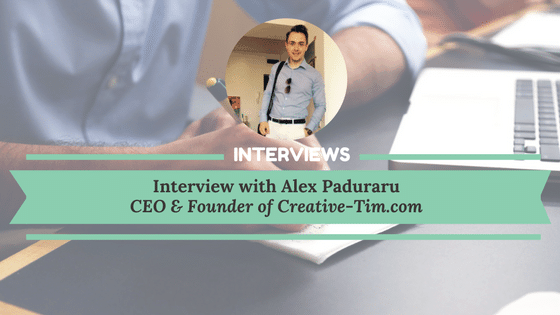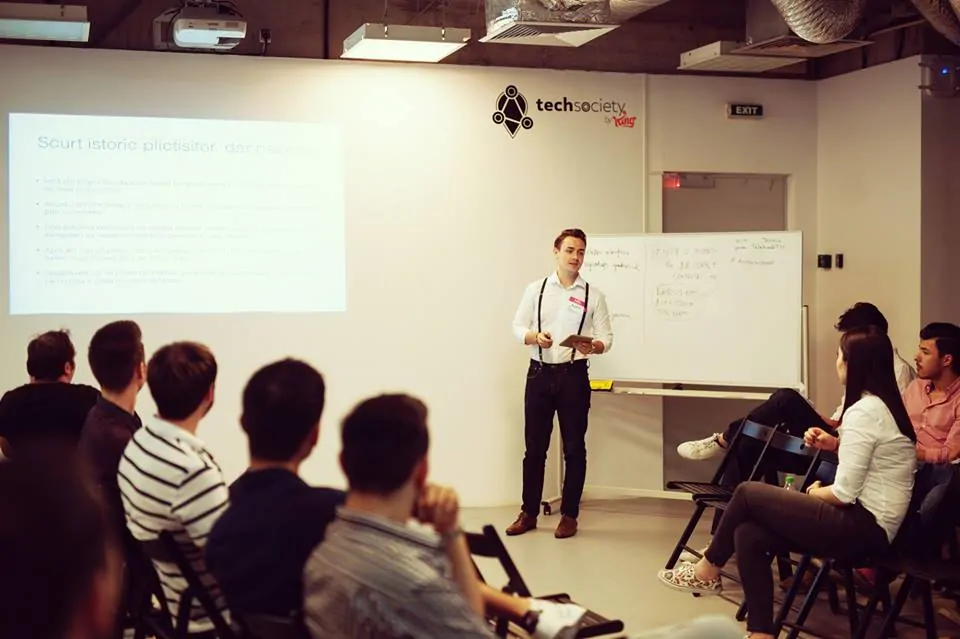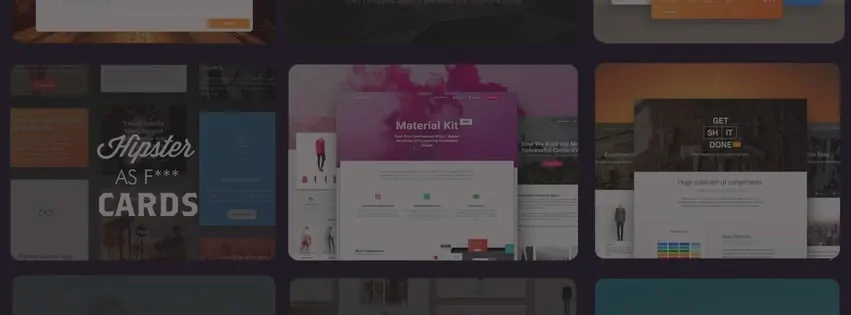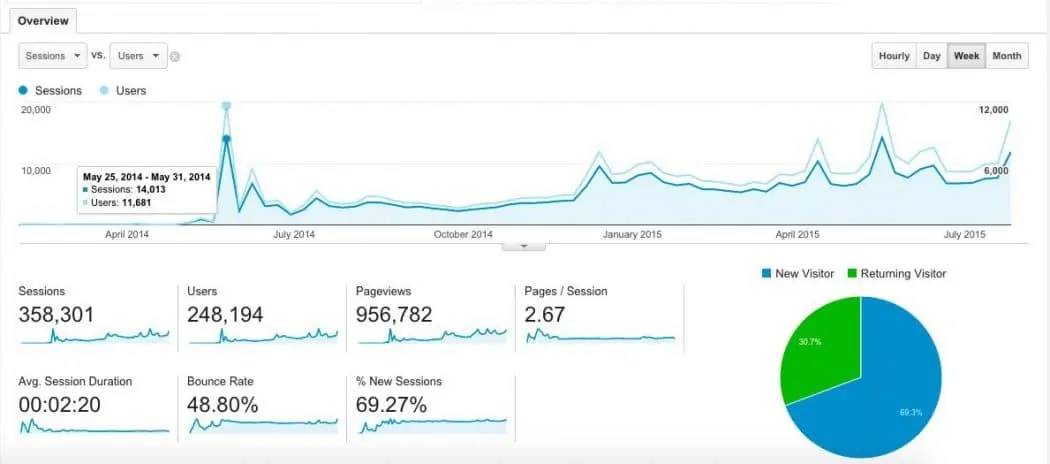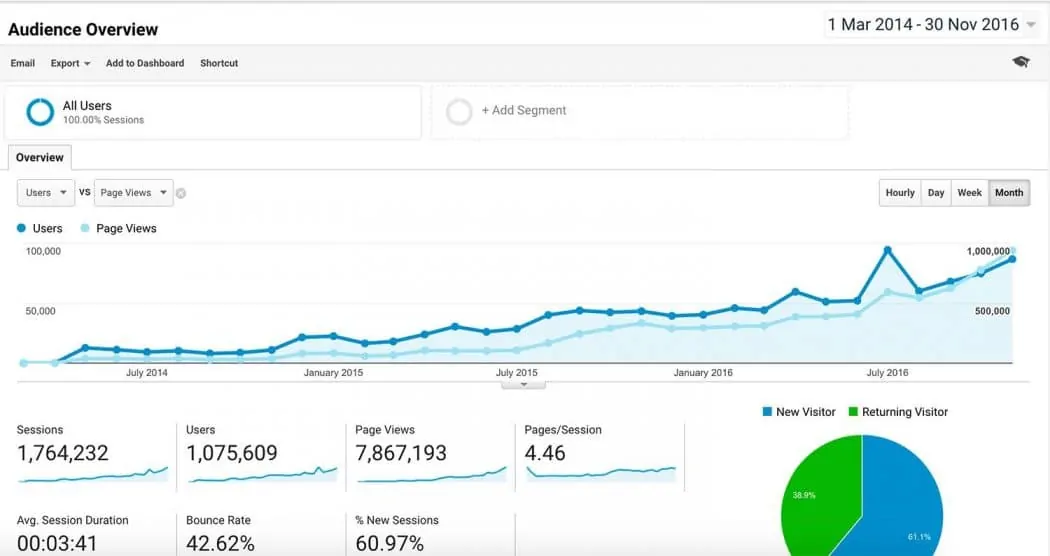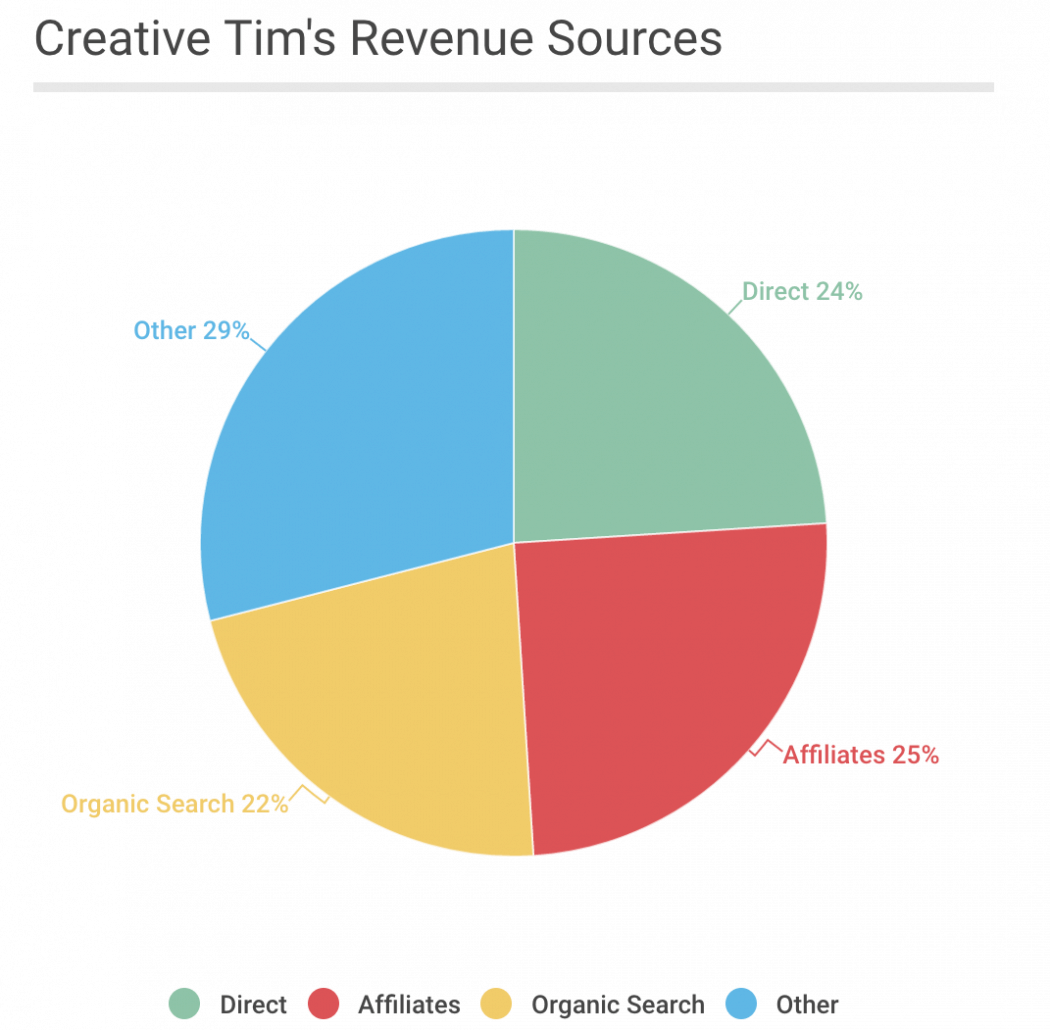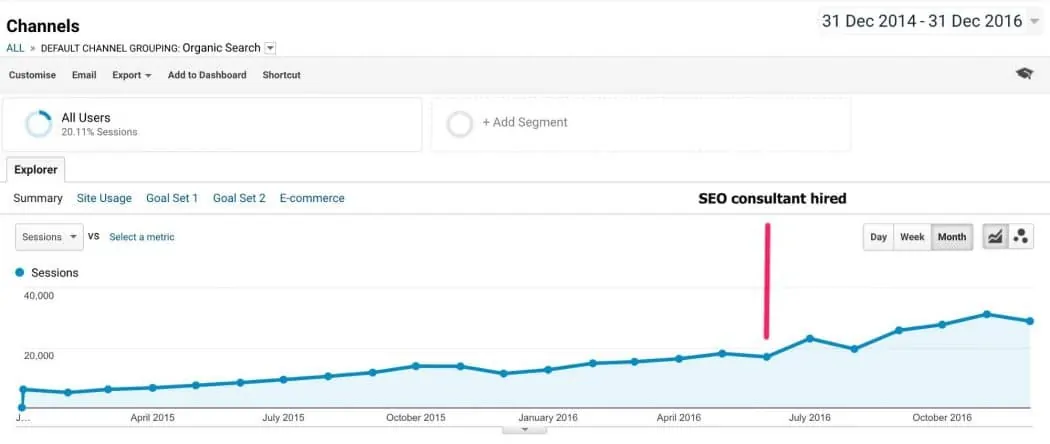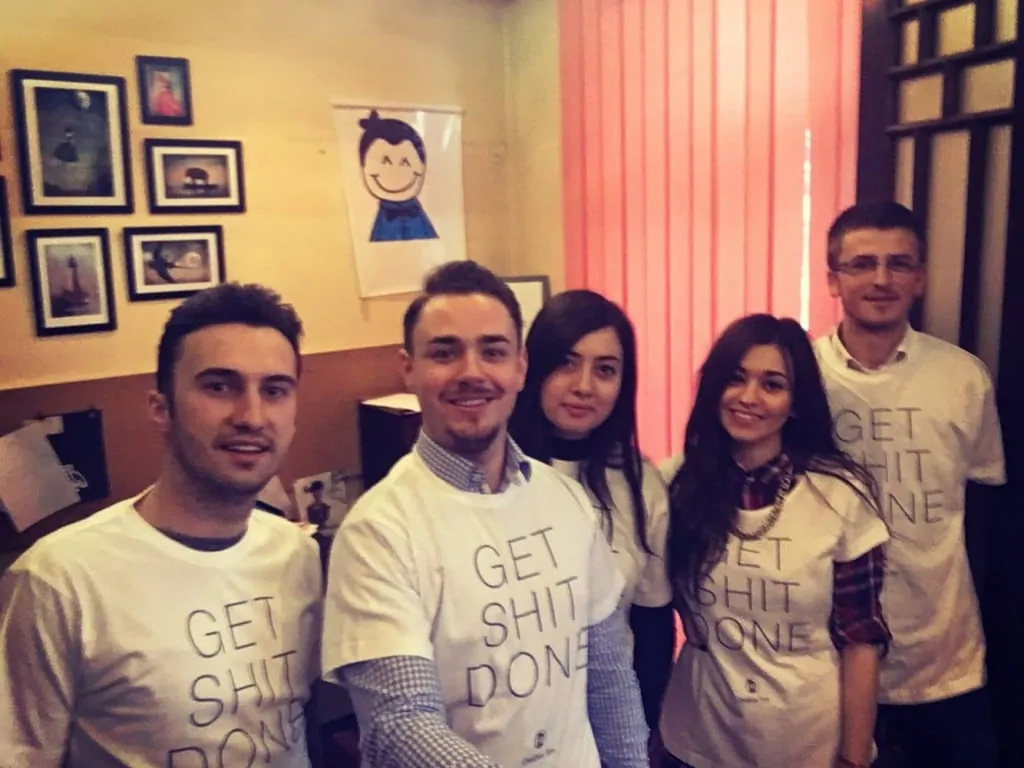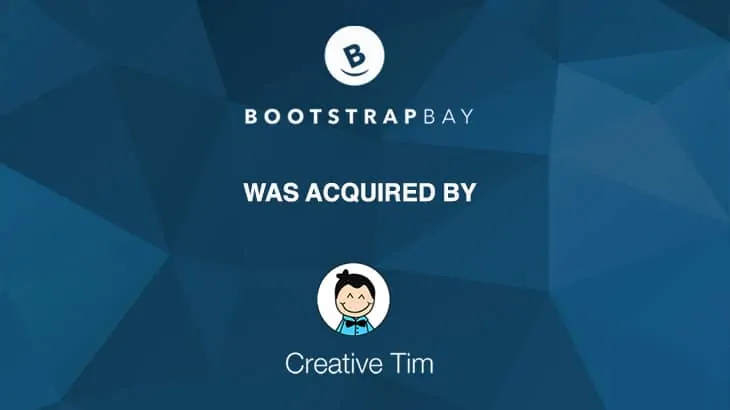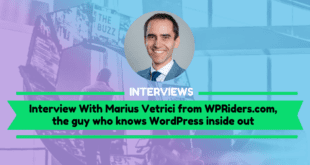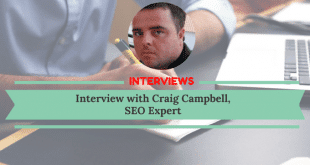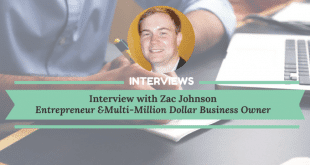Today, in our interview session we have Alex Paduraru from Creative-Tim.com. Creative Tim is a startup based in Romania that create web-design tools that makes the development process faster and easier.
Alex is one of the co-founders and drives the technical strategy of the platform, customer support and brand. He is level-headed, smart and with a taste for simple, aesthetic design.
His business journey started in a Starbucks coffee shop and now Creative-Tim is making 5 figures yearly. Read the interview to find out exactly how he started and managed to grow the business.
1. Alex, tell us more about your company and the products you are selling.
Creative Tim is a startup determined to build the best possible web design tools. That ranges from UI kits to dashboards, templates, and plugins.
We’re a team of 9 people and, since our beginning 3 years ago, we’ve always tried to build products that are helpful in the development process and that we would use ourselves.
At this moment, our products are used by over 177,000 web developers around the world, and we’ve sponsored more than 20 global hackathons from 14 countries.
2. What marketing strategies have you used to grow?
At first, nobody really understood what we wanted to do, nor the value we provided in order to improve their businesses. It was very hard, so we thought that it would be better to create a more complex product that would help people understand what we were doing.
We launched the Get Shit Done Kit, a UI Kit based on Bootstrap 3.
It appeared on Designer News, and it was very popular for that period of time. We got over 11,000 users from that source, which was a huge spike for our business. Then two weeks later we submitted it to Product Hunt. That gave us another spike with over 5,000 users. After that the situation was stable, and we switched from 0 users/week to 2-3,000 constant users/week.
A couple of months later, motivated by the success of free Get Shit Done Kit, we released Get Shit Done Kit PRO. We only made a few sales initially — it was generating ~$200/week, not enough to sustain a business. At the same time, we were working on a project for one of our big clients.
Most of our marketing strategies have been submitting our content to different communities like Reddit, Product Hunt, Designer News, Hacker News, etc. (Some important subreddits that work well in our area include /r/web_design, /r/html5, /r/frontend, and /r/webdev.)
We’ve also paid between $100-200 for newsletter campaigns a couple of times. The campaigns were not so good, and the ROI matched the amount that we invested. (Maybe it was just our case that wasn’t profitable and it works better for others.)
Then we paid $400 for Get Shit Done Kit PRO to appear in the Sidebar.io newsletter, a curated list of the 5 best design links made by Sacha Greif. This was a very rewarding newsletter for us, generating about $1,500 in sales.
Then we purchased the “Review + Newsletter” package ($550) from eWebDesign. There were about 5,000 users who participated in the giveaway, and the total sales amounted to $2,800.
3. Can you tell us more about the hackathons and how sponsoring them helped the business grow?
We also thought about different places where we can find web developers who could use our products, and we realized that hackathons are exactly what we need. So we started talking to people that are organizing hackathons to offer them free licenses for our “premium products”.
We sponsored 20 hackathons from different cities around the world (you can check them here). All the developers were happy to get free licenses, which made us happy that we could help them create faster/better projects during the hackathon, and they also found out who we are, so win-win.
4. How does your business model work? What’s the story behind your revenue?
We realized that the best business model for Creative Tim is freemium: to create good looking freebies that help web developers create great websites, then release the PRO versions for those freebies which contain more elements. At this moment we have 8 premium products which have their own freebies, and prices range from $19 to $599 depending on the license and archive type.
The freebies appear everywhere on different communities, blog posts, newsletters, social websites, and they are driving all of our traffic.
The basic idea is that those freebies are always appearing on top 10 lists in those big communities. Each post that’s in the top 10 (depending on how big is the community) gives you between 1,000 and 15,000 targeted users in one day :-O. I bet you know how much that would cost if you wanted to do a regular marketing campaign…
Some examples:
- Paper Kit — 380 upvotes on Reddit
- Material Kit — 560 upvotes on Reddit
- Light Bootstrap Dashboard Angular — 210 upvotes on Reddit
- Material Kit — 180 upvotes on Hacker News (peak position 9 with over 14,000 users coming to our website in 1 day)
- Material Kit — 860 upvotes on Product Hunt
- Get Shit Done Kit — 440 upvotes on Product Hunt
etc… you’ve got the idea
5. You mentioned affiliate sales which are making you 25% of your total sales. How did you manage to get your first affiliates?
We’ve created an affiliate network, and our affiliates are very happy because they get 50% to themselves from each transaction. For example, one of our most important affiliations is done through a very popular GitHub Repo: Bootstrap Material Design (17,000+ stars on GitHub).
Currently, affiliates account for around 25% of our overall revenue. 99% of our affiliates were contacted by us via email. On this cold emails, we are having around 10-20% response rate from which 50% are positive answers which end up in a collaboration between us and the contacted person.
6. Tell us more about SEO. How SEO impacts your business and what advice you have for entrepreneurs that want to invest more in SEO?
We wanted to increase our organic search so we’ve hired an SEO expert because we don’t have experience with it. In the first meeting, he told us that he can’t believe that we have about ~15.000 users/month from organic search when our products page has the title “Creative Tim” and the link is www.creative-tim.com/products. What does this mean for Google? What are these “products”? Are you selling shoes/bananas/icecream?
So make sure you create the links/content and titles in a way that Google understands what is happening there, in this way it will know exactly what audience to send to you.
7. What are the biggest lessons you’ve learned in your business journey?
It sounds cliché, but having a great product is crucial.
A lot of founders really struggle to try to market and sell something that people don’t want or don’t need. If your product is crap, there is no marketing strategy — and no source of investment — that can keep it alive for long.
At the moment, our products are used by over 177,000 web developers around the world. We have people from Microsoft, Ubisoft, Vodafone, Orange, Harvard University, Stanford University, and governmental institutions downloading and using them as different internal tools, and we’ve sponsored more than 20 global hackathons from 14 countries.
Don’t look to be the next Facebook. Try to solve a real problem instead.
Every step in our development seemed like the natural thing to do at the time. We’ve always created and improved our products based on our customers’ feedback, and that is the best way to develop a business. It doesn’t matter what you personally like — you need to make sure you solve a real problem for a real customer.
I really do think that the secret weapon is to deliver great products combined with a great user experience and a great customer support.
The best decision that we made was to put our customer in the first row and make sure that they were receiving a great UI kit/Dashboard that really solved their problems. That guided us through the whole journey. Our secret weapon is that we deliver great products combined with great user experience and great customer support.
8. If you could send now a message, advice to you when just started this journey, what will it be?
We are living in a world where anybody can become anything they want as long as they want to invest the amount of time that is needed. I’m saying time, and not money because we all have time. I want to recommend two books that talk about this: Karaoke Capitalism by Jonas Ridderstråle and Kjell Nordstrom, and Zero to One by Peter Thiel (a PayPal co-founder).
![Must Read Books For Every eCommerce Entrepreneur [+ Video Summaries]](https://monetize.info/wp-content/uploads/2020/08/Must-Read-Books-For-Every-eCommerce-Entrepreneur-Video-Summaries.webp)
Think of those Instagram accounts with millions of followers. If I — a regular guy from Romania — can build a profitable business in 2.5 years that is making 90x my country’s monthly minimum monthly wage, then boy, just about anything is possible.
When you are building a business and you work with people and you solve problems for people you need to let your ego aside. Don’t feed your ego, try to be as objective as you can and choose the right decision for the people in your team and for your startup.
9. How many hours do you work daily? What are daily tasks for your business?
At this moment I’m working around 10-11 hours per day. When we started we used to build freebies, templates, and UI Kits for Creative Tim a couple of hours per day, work as a web agency for another couple of hours and go to school for 2-3 hours/day.
We were in Starbucks for around 10-12 hours/day and we’ve been also working each Saturday and Sunday. I still work each Saturday and half of the Sunday.
Since we are a small team of 9 persons, I do a lot of different tasks, from branding to development, product management, web design for the templates that we sell and for our marketplace or marketing strategies. Each day I start with 2-3 hours of customer support.
I think it is crucial to talk with your customers and see if your product is good for them and in case they have some issue to make sure that they will receive a solution in 1-2 business days.
10.What books or courses helped you and you will recommend to entrepreneurs?
Here are some of my favorite books, which I recommend to everybody:
- How to Win Friends and Influence People — Dale Carnegie
- Zero to One — Peter Thiel
- The Hard Thing About Hard Things — Ben Horowitz
- Law of Success — Napoleon Hill
- Think and Grow Rich — Napoleon Hill
- Good to Great — Jim Collins
- The Lean Startup — Eric Ries
- The Charisma Myth — Olivia Fox Cabane
- Lean Analytics: Use Data to Build a Better Startup Faster — Alistair Croll
11.What do you enjoy to do in your free time? What is your passion and how would you monetize it?
I like to travel, listen to good music and read. I’ve been reading in the last 3 years more than I’ve read in my entire life while I’ve been in school and teachers “forced” me to read.
Since we started our business from a Starbucks I still enjoy going there each day, around 8 pm to read, drink coffee or black tea with milk. I also enjoy to carefully choose and match the colors of my shirts, ties, socks, trousers. Actually, I’m a little obsessed, and spend around 20 minutes in the morning, when I choose what I should wear on that day.
If there will be something that I would monetize from my activities, probably it would be something “fashion based”, where people will receive tips & tricks on how to dress and how to match different pieces.
I don’t know if somebody will pay for that, but I think it is a good idea. At least I can monetize now my passion for web design and great looking web interfaces.
12 Do you have any plans (personal or business) that you can share with us?
On the personal level
I’m preparing now the papers for USA Visa. I want to stay in San Francisco a couple of weeks to understand better the Startup Culture and see how we can improve our business.
I also just got a personal fitness trainer yesterday, so in the next 6-9 months, I want to focus on changing my lifestyle to eat healthier food and do more exercises.
On the business level
Since this is not a side project in a Starbucks anymore, we must deliver high-quality templates, no matter how many products we create or how many people are in the team. We want to increase the overall quality, documentation and have more updates cycles on the actual products.
Knowing that our business is profitable, we now want to invest all the profit in the development of new products and the growth of our team.
We are also looking to migrate our products to different frameworks like Angular, React, Meteor, VueJS etc. We’ve seen a high demand on these frameworks.
We recently acquired BootstrapBay.com, a marketplace for Bootstrap Themes and Templates, which used to be in our competitors’ list. If you want to read more about the acquisition here is the post.
This will help us deliver our products to more web developers and we will raise the standards of the themes that are sold there.
We want to become a leader in the web development market. So when freelancers or web agencies will think that they want a good starting kit for their next client to think of Creative Tim.
Thank you Alex for the interview and good luck in your business journey.
Follow Alex Paduraru on Linkedin.
 Monetize.info We Help You Monetize Better Your Digital Assets! 💰👍
Monetize.info We Help You Monetize Better Your Digital Assets! 💰👍

